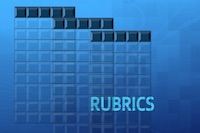Innovative assignment rubrics for ODL courses: design, implementation and impact
July 28, 2019
This post is filed under: Assessment, Daily News, Higher Education, Instructional Design.
Tagged as: Instructional Systems
 Purpose
Purpose
The purpose of this paper is to propose a new standard of assignment rubrics to minimize various interpretations and confusing expectations of the assignment outcome among all stakeholders and enhance the assignment rubrics to function not only as a grading tool but also as an assignment guiding tool for self-managed learning among open and distance learning (ODL) learners.
Design/methodology/approach
The paper looks into the problems and issues related to assignment rubrics such as various interpretation, confusing expectations and the need to have appropriate descriptions in the rubrics in order to reflect proper learning outcome among the assignment stakeholders. To solve these issues, the paper explores the new and improved requirements which were imposed to support the new assignment rubrics for courses in the university via a self-guided manual known as Rubrics Formulation Guide.
Findings
Based on the feedback received from university’s lecturers, who also functioned as moderators, it was indicated that the time taken to moderate the assignment rubrics had drastically reduced and in terms of grading, the clarity of the assignment performance expectations among the learners showed improvement, whereby as compared to the previous semester, there was significant drop for the application of remarking of assignments among May 2014 semester learners.
Practical implications
The paper includes implications of developing innovative rubrics that enhance common understanding and consistent expectation of what the final outcome of the assignment should be.
 Purpose
Purpose Purpose
Purpose